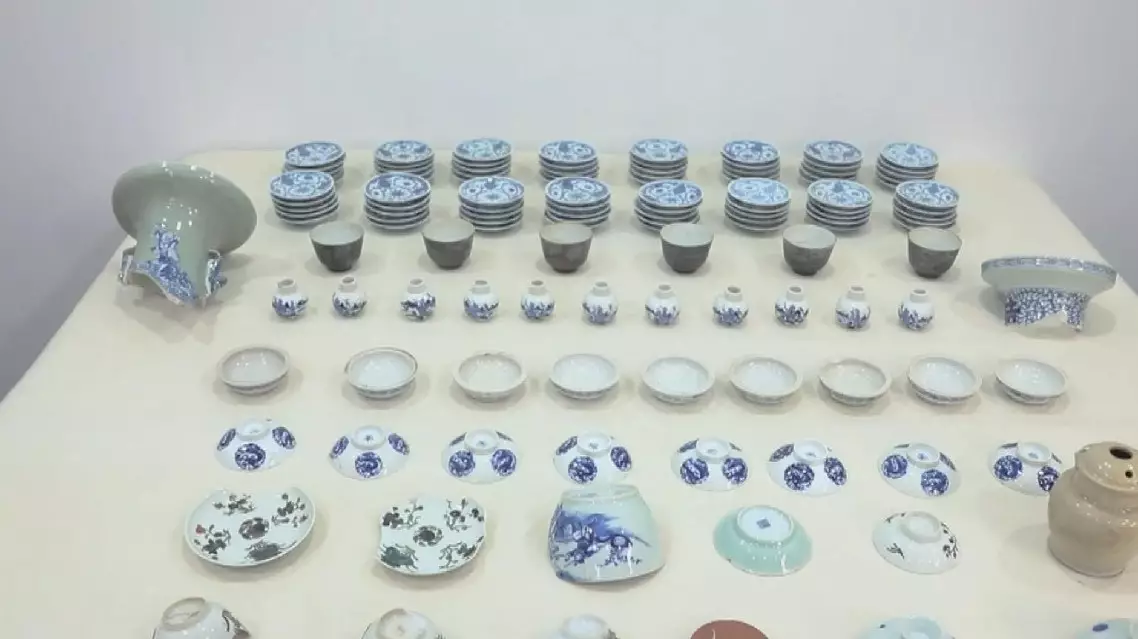Special buoys equipped with a device designed by Chinese researchers are playing an important role in Antarctic data collection, according to scientists at the China's Key Laboratory of Polar Oceanography.
Researchers at this lab have been analyzing data retrieved by the country's 40th Antarctic expedition team that returned to China last month.
Normally, researchers use devices on research ships to collect data and samples from the Antarctic oceans, but this expedition employs the use of subsurface mooring buoys that enables the collection of data on the temperature and salinity of seawater and sea currents even when no researchers are around.
The Key Laboratory, founded by the Ocean University of China, took on the arduous task of collecting data with buoys in the Amundsen Sea, one of the areas in Antarctica most affected by climate change and with the fastest melting rate of Antarctic ice shelves.
"Subsurface mooring buoys are commonly used in oceanic research. All devices are linked together with cables and deployed underwater using weights at a fixed location to collect data," said Shi Jiuxin, professor at Ocean University of China.
According to Shi, researchers at the lab designed a new device that tackles major challenges to data collection using bouys.
"The buoys may be broken or carried away by moving icebergs. That's when a device we invented comes into play. If an iceberg is about to carry away the buoy, this device on it will break from here to make sure the devices below can remain still and continue collect data on the temperature and salinity of deep ocean water," he explained.
With these devices, buoys can be used to collect data in deeper ocean. In fact, buoys retrieved from the 40th Antarctic expedition successfully collected data on the temperature of water at depth ranging from 100 to 300 meters. Statistics show that water temperature remained close to freezing during winter at these levels.
Researchers also observed water with temperatures above zero at 600 meters from the surface moving towards ice shelves.
"This is the data we collected from the retrieved buoys placed at the edge of an ice shelf during the 40th Antarctic expedition. We use different colors to represent various temperature. The color red at the bottom represents water of high temperature. The blue arrows show the directions the water flow towards. You see, water flows south, suggesting a large amount of warm water at the bottom of the ice shelf," Shi said.
After combining this new data with data from previous expeditions, researchers hope to gain a more comprehensive view of Antarctic water conditions.

Data from buoys retrieved during 40th Antarctic expedition
Archaeologists from Shanghai-based Fudan University have hailed the game-changing role of ancient DNA in exploring China's rich history, as the innovative approach has become a cornerstone in unearthing mysteries of the past, helping researchers to delve deeper into the stories of ancestors.
Led by Wen Shaoqing from the university's Institute of Archaeological Science, the team has made ground-breaking achievements in identification of flora and fauna as well as sediments in ancient times.
Wen took artifacts uncovered during the salvage of the Yangtze River Estuary No. 2, China's largest and best-preserved ancient underwater wooden shipwreck.
"For example, we took a big amphora with a height of some 60 centimeters out of the Yangtze River Estuary No. 2 salvage. The DNA approach showed the content inside the jar was divided into two layers, with the upper part being basically aquatic and the lower of the rest 30 centimeters related with land. Rice DNA is dominant among all DNA extracted from the jar. Why? Because there were too many cups inside the amphora. To save space, cups were put together closely and tightly. When we separated cups from each other, we found rice husks crammed between cups. Then we got to know that the rice husks were used to prevent the cups from getting crushed. So rice husks were put inside as [shakeproof] stuffing," said Wen.
What's more, the archaeological team detected bamboo DNA from the relics, revealing new findings of the shipping lines.
"The cups used to be tied up with bamboos when being packed. But we can't see these bamboos inside as they had already got rotten. The detection of bamboo DNA and rice husk DNA showed that these things were from Jiangxi Province. And the porcelains were from Jingdezhen in Jiangxi. We then came to a conclusion that the sunken ship had anchored in Jiangxi, where the Jingdezhen ceramics were transported aboard. As for the sunken ship, at least we know that it sailed from Jingdezhen before the submergence," he said.
Wen also said the sediments in the shipwreck is of great significance to uncover more mysteries.
"If a cabin was overrun with escherichia coli and the like, it was believed to be a restroom. From the fouling on the bottom of the ship, we can probably know where it had been to. That's because different microbes were attached to the bottom of the ship when it sailed to different waters, which can tell us its whereabouts. In other words, we're salvaging a piece of history instead of a shipwreck. These sci-tech methods help us fully unfold these pieces of history. It surely carries the greatest significance in our archaeological work." Wen said.
The Yangtze River Estuary No.2 was a sailing ship from the reign of the Tongzhi Emperor of Qing Dynasty (1644-1911). The shipwreck is about 38.5 meters long and 7.8 meters wide, and it contains 31 cabins. The ship is "sleeping" under the waters northeast of Shanghai's Hengsha Island, with its hull buried 5.5 meters under the seabed.

Archaeologists highlight DNA approach to unlocking historical mysteries










